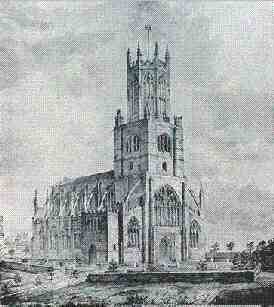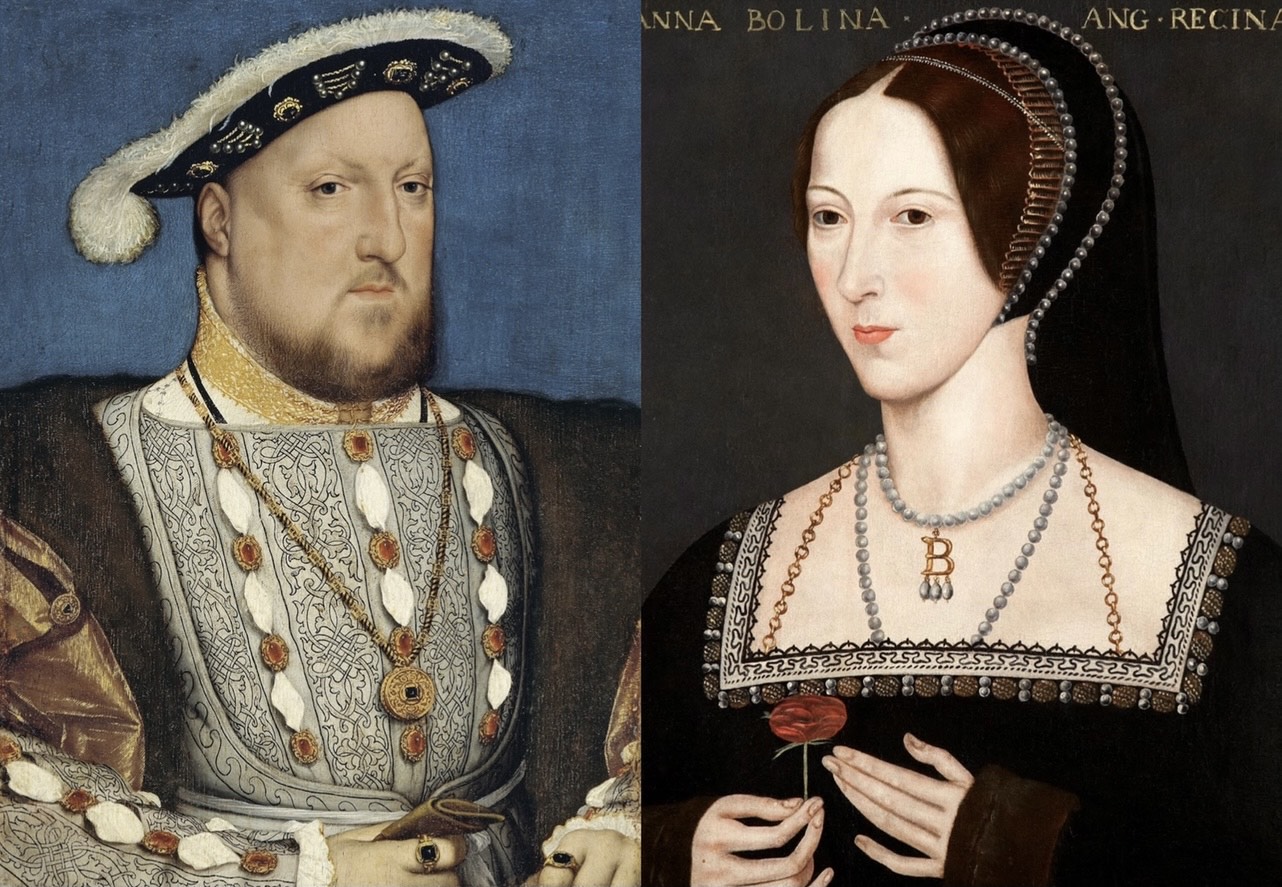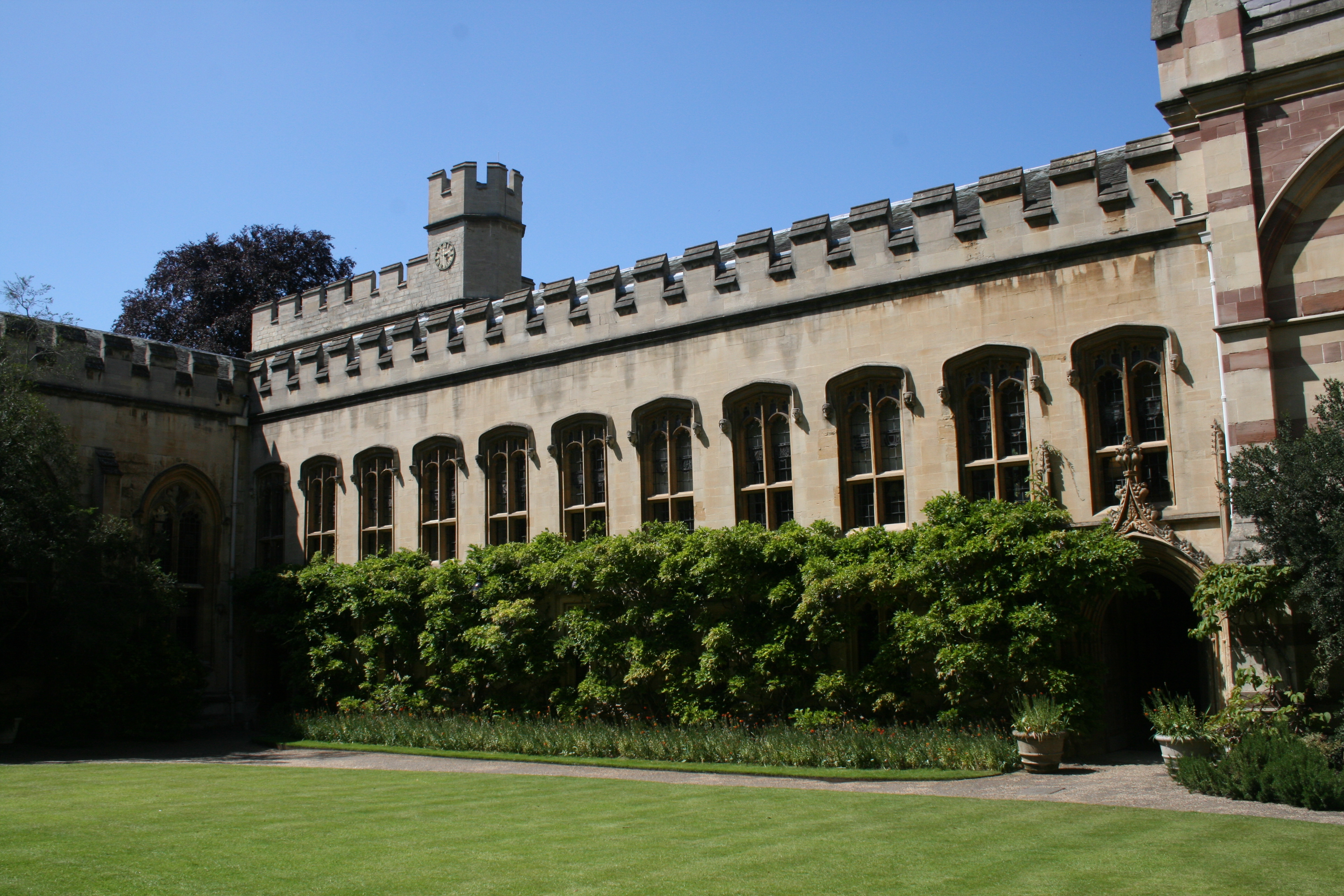|
Fotheringhay
Fotheringhay is a village and civil parish in Northamptonshire, England, north-east of Oundle and around west of Peterborough. It is most noted for being the site of Fotheringhay (or Fotheringay) Castle which was razed in 1627. There is nothing left of the castle to be seen today other than the motte on which it was built that provides excellent views of the River Nene. The Nene Way long distance footpath runs through the village. As the home of the great Yorkist line, the village was, for a considerable part of the 15th and 16th centuries, of national standing. The death of Richard III at Bosworth Field altered its history irrevocably. As the historian John Nicholls stated, "Fotheringhay has been distinguished beyond any other place in Britain, except the Capital, by the aggravated misfortunes of Royalty." At the time of the 2001 census, the parish's population was 123 people, reducing to 119 at the 2011 census. History The first written mention of a settlement here ... [...More Info...] [...Related Items...] OR: [Wikipedia] [Google] [Baidu] |
Fotheringhay Castle
Fotheringhay Castle, also known as ''Fotheringay Castle'', was a High Middle Age Norman Motte-and-bailey castle in the village of Fotheringhay to the north of the market town of Oundle, Northamptonshire, England (). It was probably founded around 1100 by Simon de Senlis, Earl of Northampton. In 1113, possession passed to Prince David of Scotland when he married Simon's widow. The castle then descended with the Scottish princes until the early 13th century, when it was confiscated by King John of England. By 1220, Fotheringhay Castle was controlled by Ranulf de Blondeville, 6th Earl of Chester. In January the following year, it was briefly captured by William II de Forz, 3rd Earl of Albemarle, in his rebellion against King Henry III. Forz abandoned the castle, Henry III took it under his control, and Fotheringhay remained in royal hands until the reign of Edward II. It was a favoured residence of the Dukes of York, and King Richard III was born there in 1452. ... [...More Info...] [...Related Items...] OR: [Wikipedia] [Google] [Baidu] |
George Portwood
George Portwood (died c.1744) was a carpenter and architect who worked in Stamford.He was Chamberlain of Stamford in 1736 and Mayor of Stamford. Work by George Portwood *Bridge over the River Nene at Fotheringhay 1722. *Took down the ruinous steeple of Pickworth Church, Rutland *George Hotel, Stamford refronted in 1724 by George Portwood, and further alterations and repairs were carried out between then and 1726. *Bridge at Woodnewton, Northamptonshire, 1735 (now demolished). *Rebuilt Braunston Church Tower, Rutland. *Witham on the Hill Church, Lincoln (1737). The tower and steeple were rebuilt in a medieval revival style by Portwood in 1737–38."Antram",(1989) p. 807 *Barn Hill, Stamford. Portwood provided William Stukeley William Stukeley (7 November 1687 – 3 March 1765) was an English antiquarian, physician and Anglican clergyman. A significant influence on the later development of archaeology, he pioneered the scholarly investigation of the prehistor ... w ... [...More Info...] [...Related Items...] OR: [Wikipedia] [Google] [Baidu] |
Oundle
Oundle () is a market town on the left bank of the River Nene in North Northamptonshire, England, which had a population of 5,735 at the time of the 2011 census. It is north of London and south-west of Peterborough. The town is home to Oundle School. History The town's name origin is uncertain. It is probably an old district name, in a grammatical form suggesting a tribal name, 'the Undalas'. Discoveries of prehistoric and Bronze Age, Iron Age and Roman materials suggest that Oundle has been a settlement location for several thousand years. Findings have included a number of Iron Age coins, and Roman bronze pins, coins and skeletons. A significant Roman find was part of a Roman cup discovered in the church yard of St. Peter's Church in the early 19th Century. Further excavation on the site led to the findings of many Roman coins, some from the time of the reign of Emperor Claudius. The finding of red tile and building stone at a site near Ashton Road, Oundle is seen as s ... [...More Info...] [...Related Items...] OR: [Wikipedia] [Google] [Baidu] |
Northamptonshire
Northamptonshire (; abbreviated Northants.) is a county in the East Midlands of England. In 2015, it had a population of 723,000. The county is administered by two unitary authorities: North Northamptonshire and West Northamptonshire. It is known as "The Rose of the Shires". Covering an area of 2,364 square kilometres (913 sq mi), Northamptonshire is landlocked between eight other counties: Warwickshire to the west, Leicestershire and Rutland to the north, Cambridgeshire to the east, Bedfordshire to the south-east, Buckinghamshire to the south, Oxfordshire to the south-west and Lincolnshire to the north-east – England's shortest administrative county boundary at 20 yards (19 metres). Northamptonshire is the southernmost county in the East Midlands. Apart from the county town of Northampton, other major population centres include Kettering, Corby, Wellingborough, Rushden and Daventry. Northamptonshire's county flower is the cowslip. The Soke of Peterborough fall ... [...More Info...] [...Related Items...] OR: [Wikipedia] [Google] [Baidu] |
Richard III Of England
Richard III (2 October 145222 August 1485) was King of England and Lord of Ireland from 26 June 1483 until his death in 1485. He was the last king of the House of York and the last of the Plantagenet dynasty. His defeat and death at the Battle of Bosworth Field, the last decisive battle of the Wars of the Roses, marked the end of the Middle Ages in England. Richard was created Duke of Gloucester in 1461 after the accession of his brother King Edward IV. In 1472, he married Anne Neville, daughter of Richard Neville, 16th Earl of Warwick. He governed northern England during Edward's reign, and played a role in the invasion of Scotland in 1482. When Edward IV died in April 1483, Richard was named Lord Protector of the realm for Edward's eldest son and successor, the 12-year-old Edward V. Arrangements were made for Edward V's coronation on 22 June 1483. Before the king could be crowned, the marriage of his parents was declared bigamous and therefore invalid. Now offi ... [...More Info...] [...Related Items...] OR: [Wikipedia] [Google] [Baidu] |
North Northamptonshire
North Northamptonshire is one of two local authority areas in Northamptonshire, England. It is a Unitary authorities of England, unitary authority area forming about one half of the Ceremonial counties of England, ceremonial county of Northamptonshire. It was created in 2021. Its notable towns are Kettering, Corby, Wellingborough, Rushden, Raunds, Desborough, Rothwell, Northamptonshire, Rothwell, Irthlingborough, Thrapston and Oundle. The council is based at the Corby Cube in Corby. It has a string of lakes along the River Nene, Nene Valley Conservation Park, associated Nene Valley Railway, heritage railway, the village of Fotheringhay which has tombs of the House of York as well as a towering church supported by flying buttresses. This division has a well-preserved medieval castle in private hands next to Corby – Rockingham Castle – and about 20 other notable : country houses in Northamptonshire, country houses, many of which have visitor gardens or days. History N ... [...More Info...] [...Related Items...] OR: [Wikipedia] [Google] [Baidu] |
Elizabeth I Of England
Elizabeth I (7 September 153324 March 1603) was Queen of England and Ireland from 17 November 1558 until her death in 1603. Elizabeth was the last of the five House of Tudor monarchs and is sometimes referred to as the "Virgin Queen". Elizabeth was the daughter of Henry VIII and Anne Boleyn, his second wife, who was executed when Elizabeth was two years old. Anne's marriage to Henry was annulled, and Elizabeth was for a time declared illegitimate. Her half-brother Edward VI ruled until his death in 1553, bequeathing the crown to Lady Jane Grey and ignoring the claims of his two half-sisters, the Catholic Mary and the younger Elizabeth, in spite of statute law to the contrary. Edward's will was set aside and Mary became queen, deposing Lady Jane Grey. During Mary's reign, Elizabeth was imprisoned for nearly a year on suspicion of supporting Protestant rebels. Upon her half-sister's death in 1558, Elizabeth succeeded to the throne and set out to rule by good counsel. S ... [...More Info...] [...Related Items...] OR: [Wikipedia] [Google] [Baidu] |
House Of York
The House of York was a cadet branch of the English royal House of Plantagenet. Three of its members became kings of England in the late 15th century. The House of York descended in the male line from Edmund of Langley, 1st Duke of York, the fourth surviving son of Edward III. In time, it also represented Edward III's senior line, when an heir of York married the heiress-descendant of Lionel, Duke of Clarence, Edward III's second surviving son. It is based on these descents that they claimed the English crown. Compared with its rival, the House of Lancaster, it had a superior claim to the throne of England according to Cognatic primogeniture#Male-preference primogeniture, cognatic primogeniture, but an inferior claim according to agnatic primogeniture. The reign of this dynasty ended with the death of Richard III of England at the Battle of Bosworth Field in 1485. It became extinct in the male line with the death of Edward Plantagenet, 17th Earl of Warwick, in 1499. Descen ... [...More Info...] [...Related Items...] OR: [Wikipedia] [Google] [Baidu] |
Earl Of Newport
Earl of Newport, in the Isle of Wight, was a title in the Peerage of England. It was created in 1628 for Mountjoy Blount, 1st Baron Mountjoy, an illegitimate son of Charles Blount, 1st Earl of Devonshire. He had already been created Baron Mountjoy, of Mountjoy Fort in the County of Tyrone, in the Peerage of Ireland in 1618, and Baron Mountjoy, of Thurveston in the County of Derby, in the Peerage of England in 1627. The latter title was originally created with precedence ahead of those barons created between 20 May and 5 June 1627. This precedence was later revoked by the House of Lords. The first Earl's three surviving sons were "all idiots", and some confusion exists as to their names and dates of death. Parish registers indicate that the second Earl, named either George or Mountjoy, died at Newport House in London, and was buried at St Martin-in-the-Fields in March 1675; his brother Thomas, the third Earl, was buried at Weyhill in May 1675; and their youngest brother Henry was ... [...More Info...] [...Related Items...] OR: [Wikipedia] [Google] [Baidu] |
George Savile, 1st Marquess Of Halifax
George Savile, 1st Marquess of Halifax, (11 November 1633 – 5 April 1695), was an English statesman, writer, and politician who sat in the House of Commons in 1660, and in the House of Lords after he was raised to the peerage in 1668. Background and early life, 1633–1667 Savile was born in Thornhill, in the West Riding of Yorkshire, the eldest son of Sir William Savile, 3rd Baronet, and his wife Anne Coventry, eldest daughter of Lord Keeper Thomas Coventry, 1st Baron Coventry. His father distinguished himself in the civil war in the royalist cause and died in 1644. Savile was also the nephew of Sir William Coventry, who is said to have influenced his political opinions, and of Lord Shaftesbury, afterwards his most bitter opponent, and great-nephew of the Earl of Strafford. He was the great-grandson of Sir George Savile of Lupset and Thornhill (created baronet in 1611). He was educated at Shrewsbury School in 1643 while his mother was staying with a sister in Shropshire. H ... [...More Info...] [...Related Items...] OR: [Wikipedia] [Google] [Baidu] |
Balliol College, Oxford
Balliol College () is one of the constituent colleges of the University of Oxford in England. One of Oxford's oldest colleges, it was founded around 1263 by John I de Balliol, a landowner from Barnard Castle in County Durham, who provided the foundation and endowment for the college. When de Balliol died in 1268, his widow, Dervorguilla, a woman whose wealth far exceeded that of her husband, continued his work in setting up the college, providing a further endowment and writing the statutes. She is considered a co-founder of the college. The college's alumni include four former Prime Ministers of the United Kingdom ( H. H. Asquith, Harold Macmillan, Edward Heath, and Boris Johnson), Harald V of Norway, Empress Masako of Japan, five Nobel laureates, several Lords of Appeal in Ordinary, and numerous literary and philosophical figures, including Shoghi Effendi, Adam Smith, Gerard Manley Hopkins, and Aldous Huxley. John Wycliffe, who translated the Bible into English, was m ... [...More Info...] [...Related Items...] OR: [Wikipedia] [Google] [Baidu] |
Relic Sunday
Relick Sunday (or Relic Sunday) is a moveable feast in the Christian calendar celebrated in mid July on the third Sunday after Midsummer's day. The feast celebrated Christian relics of all kinds, in which offerings were given to relics. A second usage of the term used in medieval times occurred across England, persisting most notably in Northamptonshire, when the Sunday after the feast of Saint Thomas Becket Thomas Becket (), also known as Saint Thomas of Canterbury, Thomas of London and later Thomas à Becket (21 December 1119 or 1120 – 29 December 1170), was an English nobleman who served as Lord Chancellor from 1155 to 1162, and then ... (29 December) was commonly known as Relick Sunday. This meant that it was celebrated annually between 30 December and 5 January. A manuscript from the late fifteenth century carrying a sermon entitled ''In festo Reliquarum'' describes its commemoration:London, British Library, Harley MS 2247, f. 169v. Punctuation and spelling ... [...More Info...] [...Related Items...] OR: [Wikipedia] [Google] [Baidu] |


.jpg)



